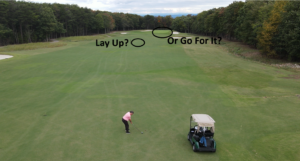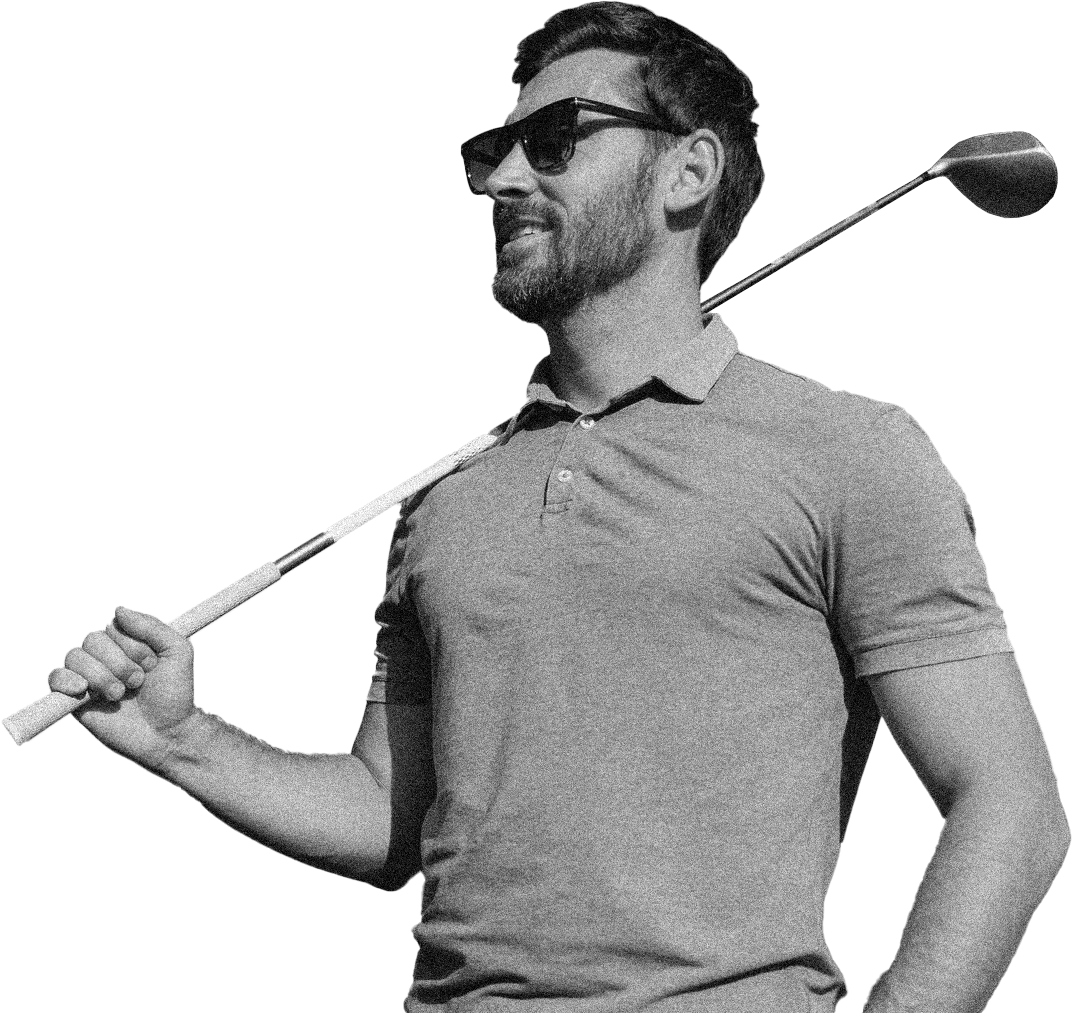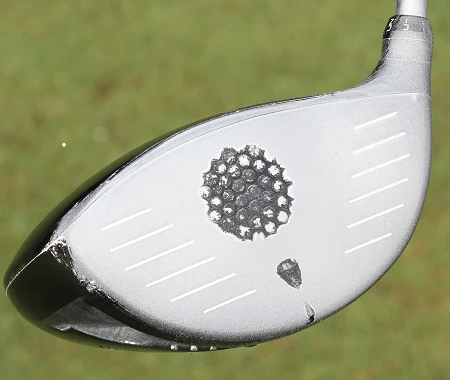This is the time of year when most of my clients are telling me they wish they could hit the ball a longer distance. Doesn’t matter what club, they just want more distance. There are numerous ways to add distance to any shot in golf. But there are 5 ways to add distance to all shots. 5 ways that are sustainable. It doesn’t matter if you’re playing one of the many Orlando golf courses that demand length, or a course near you that demands you hit the ball far. Sustainable length is what it takes to play consistent golf. Let’s explore the 5 ways to add distance that I think you can achieve quickly and sustain over a longer period of time. The first 4 ways deal with you and what you have ultimate control of. The 5th way deals with what the first 4 should add up to.
How is Distance Made?
To understand how the 5 ways to add distance will work for you, let’s define how distance is created when hitting a golf ball. As simple as we can, from a physics standpoint. In order for a projectile to move any distance, energy must transfer from a source of force to the projectile. In this case, the driver to the golf ball. To increase the distance the projectile travels, you can increase the force of energy being transferred to the projectile and/or maximize the conditions of energy transfer to the projectile. Maximizing conditions includes doing so from both the energy source, the projectile, and the moment of energy transfer.
To increase the force, or increase the speed of the driver, you can change the energy source of the driver. Meaning, change who you are physically. You can change the physical composition of the driver or the projectile, the golf ball. Meaning, you can change equipment so you can generate more force or speed. But you can also change equipment that can store and efficiently use the transfer of energy; example – the ball.
You can change how the force is delivered to the projectile, by adding more force. In the case of golf distance, the driver moving faster as it impacts the ball. And when these conditions have been adjusted to create more distance, you still have to make adjustments to the actual moment in time that transfers the energy from the force to the projectile,. Meaning, how good is your impact position with the ball and the club face?
This combination is true for any club in your bag, not just the driver. Using the basic premise above, let’s explore how you can improve and maximize your sources of energy, the projectile, and how efficient you can make your moment of energy transfer more efficient.
Get in Shape
Sound familiar? I can tell you from personal experience it works! 10-years ago I set out to lose weight by getting into golf shape. I abandoned practicing to do so. Over the course of 5 months, I lost 62 pounds and gained 50-yards with all clubs. I’ve put 20 of those pounds back on. And 10-years later my body is not quite what it used to be. But staying in decent playing shape allows me to regain the distance I need from every club when called upon.
It does not matter what you do to stay in shape. Just do something everyday. All it takes is 5-10 minutes of golf specific exercise to maintain your ability to make fast swings while preventing injury. And being in shape allows you to keep focus and concentration. Focus your efforts on the core of your body. Particularly your hamstrings, gluts, and abdomen. Whether playing the best golf courses in Orlando, or in your town, being in golf shape is a must if you’re wanting to increase the distance you hit each shot.
Want more information about getting into golf shape? Look no further than my staff fitness coach, Jacob Glassmeyer. You can contact Jacob directly about your golf fitness needs by clicking here. Getting into shape is an investment in yourself, not equipment. And I have found through my 30+ years of coaching that an investment in you is always the best investment in your golf game.
Change Your Golf Ball or Your Shafts
You can make an investment in your equipment. And most golfers will opt for this choice before making an investment in themselves. Unfortunately, with technology advancements moving the needle almost everyday, your equipment investment sources better have deep pockets. But you can make a great investment in your equipment by insuring the shafts you’re playing are transferring the maximum amount of energy to a golf ball that can store and use the energy transfer efficiently.
Are the shafts in your clubs creating enough energy, using your current skills and fitness level, to maximize the creation and accuracy of the speed you can produce at the moment of impact? Original equipment shafts, or “OEM shafts” are made for a general population of golfers who swing the club within a given swing speed range. It’s good equipment to get started with. But not the best equipment to gain distance in all clubs. When a client comes to me, ready to make a deeper commitment into golf, we immediately talk about how their shafts are effecting their ability to maximize their current potential. And if new shafts are needed, I immediately send them to Club Champion. To see more about shafts and how Club Champion can assist you with adding distance to your game, check out this video.
The same goes for the golf ball you’re using. If you’re truly committed to increasing the distance your shots travel, then you should invest some time and research into the golf ball you’re playing. You must also stop playing randomly found golf balls by different brands. And stop buying second hand golf balls. Doing this is making sustained creation of additional distance almost impossible.
Spend time with a club fitter, or your coach, testing golf balls using a ball flight monitor such as FlightScope’s Mevo+. This is an affordable alternative to the FlightScope X3 that I use with clients. It also provides you the ball data needed to determine the proper launch and descent conditions you need to maximize your potential distances with all clubs. The core, mantle, cover, and dimple pattern of every type of golf ball differs within every brands’ portfolio of golf ball offerings. And differs brand to brand. Each can effect the efficiency of how the ball uses the energy it stores at impact. And in turn, effects the outcome of every shot you make using the unique set of skills and ability you possess.
Learn to Turn Faster
Hitting the ball “harder” does not produce extra distance. It will produce injury and tension, resulting in less distance. To turn faster, you need to start making more of an investment in you and your skills by employing the services of a good golf coach.
Learning to create rotational force in your golf swing proportionately creates more speed in your golf swing. This happens through better sequencing of your swing. And more efficient use of the energy you transfer through the club to the golf ball. I often tell my clients that creating more speed starts from the ground up. More about that in a moment. But it also requires that your “carousel” move faster from the inside out.
If you can remember riding your favorite merry-go-round, you probably gravitated to riding the horses and animals at the outside of the carousel. Why? Because those figures moved faster than the ones located closer to the center of the carousel. As the carousel increases its rotational speed from its middle, the outside figures move increasingly faster than the center of the carousel. Those seats have to move faster to cover a larger distance within the rotation versus the seats closer to the center.
If you’re a math or physics geek, you know this as linear speed. The formula is “linear speed = angular speed x radius of rotation”. Increase the angular speed at which your club moves, as well as increase the length of the club, and you have a faster moving club. You can’t physically alter the length of the club in your swing. But you can increase the speed at which you rotate.
To do so, feel as though you’re swinging the club with your belt, not your arms. Doing so will make your arms feel like they’re following your core, not passing it. So many golfer attempt to swing the club using just arm speed. True, your arms can move faster than you body. But doing so often creates tension in the swing. And tension slows golf swings. In addition, using nothing but your arms tends to make you swing at the ball versus through the ball. Using the combination of your rotation plus your arms, you’ll generate a proportionate increase of speed throughout swing and through the golf ball.
Use the Ground to Turn Faster
Learning to turn faster requires your foot work to coordinate better and interact with the ground more efficiently. All great athletic moves start from the ground up, making proper footwork a must to achieve increased swing speeds and more distance.
There are 2 quick and easy ways to use the ground more efficiently in your swing. Transfer your weight during the swing. And use all of your foot, not just your toes.
Transferring weight is relatively easy if you understand the process. Basically, get your weight to move from the back of your swing to the front of your swing, as you swing. Sounds easier than it actually is for some golfers. Why? Because most golfers are attempting to hit at a ball, not move their body. Teach your body how to move properly, without a ball or club, and you’re well on your way to transferring weight during the golf swing. Check out this video I created in 2015 about how throwing a ball is the exact same process of transferring your weight during a golf swing.
Using your toes as the sole ground force is not optimal. As a matter of fact, according to BodiTrak, your toes are in essence “brakes” just like the brake petal in your vehicle. Being on your toes at impact reduces your ability to shift your weight. In turn reducing rotation. And causing the arms to be the only propellant force in your golf swing.
I know you’ll argue that some of the longest drivers of the golf ball on the planet seem to be on their toes at impact. But the fact of the matter is, they use their entire foot to “launch” themselves and the ground force they create through the swing. To do so, the amount of force per square inch they exert into the ground is incredible. Watch in slow motion and you’ll see that the entire back foot at the top of their swings is pushing into the ground. And at the moment of impact, their weight is fully transferred into their lead side.
Centered Contact
After accomplishing the above 4 out of 5 ways to add distance, the only thing left to accomplish of the 5 ways to add distance is the most important. Centered contact of the golf ball to the clubface at impact.
When the ball is hit anywhere but the geometrical center of the clubface, speed and power is lost. And so is lost your ability to fully compress the golf ball. Why is this important? Because if can’t fully compress the golf ball at impact, you can’t create optimal ball speed. And without increasing your ball speed, you can’t add distance. We’re all human. And humans will max-out their physical ability to swing the club fast. Being able to make centered contact allows your max speed to increase ball speed. And ball speed does not have a max.
Do you know if you hit the sweet spot of your golf club? It’s easy to find out. As easy as spraying foot powder on your clubs and hitting a golf ball. Foot powder leaves a compression mark on the face of your club as the ball is struck. And it is easy to wash off your club when done. This identifies where the ball was struck in relation to the center of the clubface. And provides you instant feedback of whether you’re making centered contact.
A couple of items to consider as you look at your impact marks on a clubface:
- Off-center hits to either side of the club creates a tilt in the spin axis of the golf ball. This tilt is mostly determined by the path the club takes to the golf ball, and the position the clubface is in related to the club path. Excessive spin axis tilt is the killer of all shots. And the ultimate culprit to your wayward drives, which reduces distance.
- Missing the center low but in the center generally reduces the overall spin of a shot. Reduced spin for the person who does not swing fast will reduce the time the ball is in the air. And in turn, reduce the distance the ball will travel in the air. Oppositely, if the ball hits higher and in the center of club, it produces excessive spin. This makes the ball “balloon” in the air and again reduces distance.
Conclusion to the 5 Ways to Add Distance
There are other mitigating factors that can add distance to your golf shots. But these 5 ways to add distance are the essential ingredients. All but 1 of these items are an investment into yourself. And at some point, your investment in yourself will max out, causing you to seek coaching assistance to fine tune your skills and abilities. But why not seek professional assistance to achieve all 5 ways to add distance? I hope that as you decide to play the best golf courses in Orlando and determine to add distance to your golf game, you’ll consider me and my staff of highly qualified coaches to assist you with these 5 ways to add distance to your golf game.






